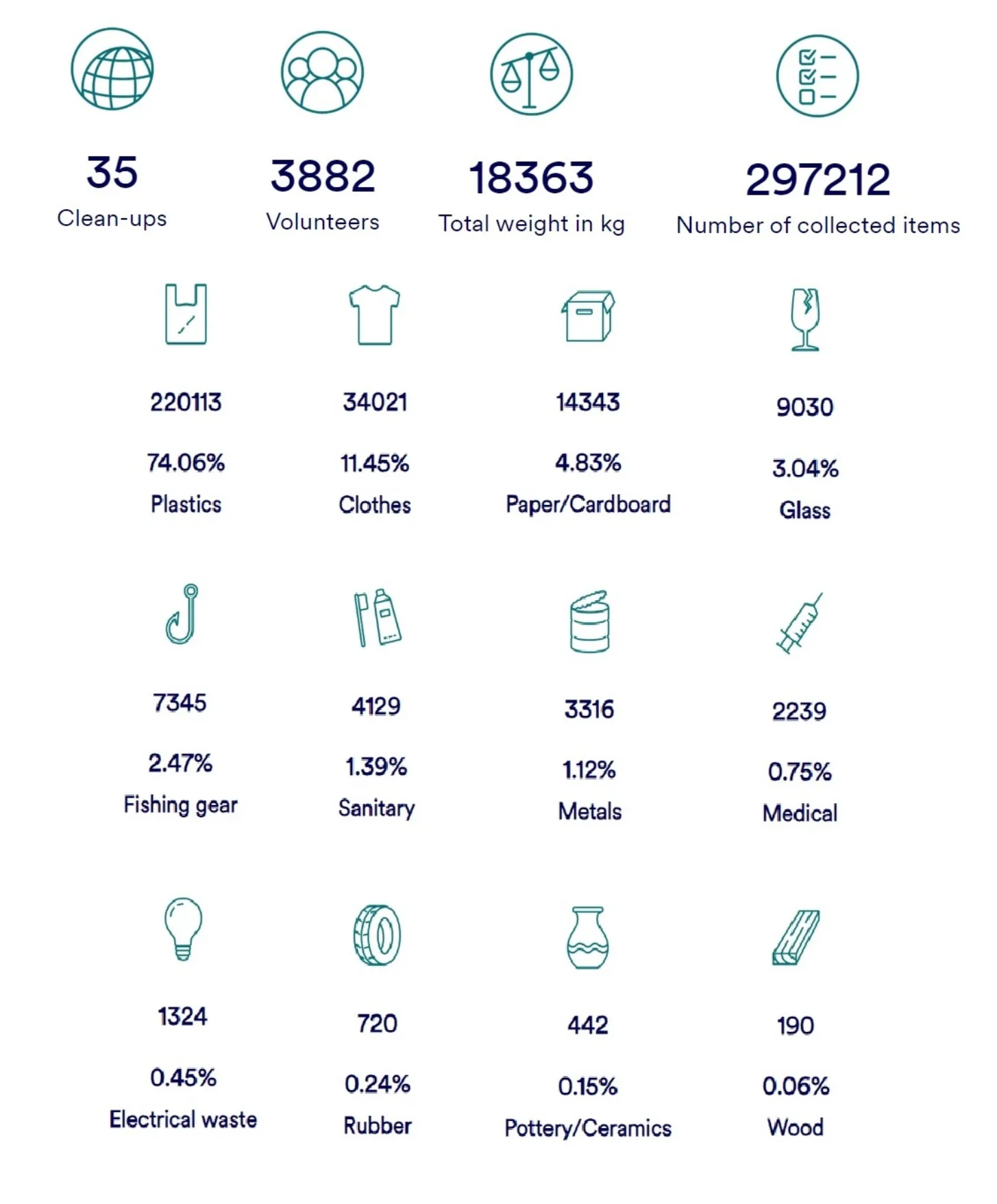Summary of our first clean-up campaign
Published: 28.07.2023
Updated: 01.08.2023
Farhan Khan
Senior Researcher
In our first campaign, ‘Clean Shores, Great Lakes’ successfully carried out 35 clean-ups across the Tanzanian shorelines of the African Great Lakes. This is how we did.
In a six-week period from late February to mid-April the ‘Clean Shores Great Lakes’ project conducted 35 clean-ups concentrated around three regions in Tanzania. Twenty clean-ups were conducted in Mwanza (Lake Victoria), nine in Kigomo (Lake Tanganyika) and six clean-ups in Kyela (Lake Nyasa). Close to 4000 volunteers joined our efforts and with their help over 18000 kg of litter was collected – almost 300000 items of discarded waste recovered from the environment.
Importantly, our clean-ups were designed not to disrupt people’s livelihoods, so we started early (typically 7 or 8 am) and worked for only a couple of hours. To make these quick clean-ups effective our team were joined by many volunteers including jogging clubs, scouts, youth organisations, market traders and many more members of the public. A huge thank you to everyone that gave up their time.

Summary of our first clean-up campaign
Plastics are everywhere
At every location at each lake, plastics were found. Plastics products were by far the biggest group of litter accounting for almost three-quarters (75%) of everything we collected. Clothing (11.5% including clothes, shoes, and flip-flops) was the second most abundant category of waste, with paper/cardboard (5%), glass (3%) and fishing gear (2.5%) completing the top 5.

Top 10 items found from our 35 clean-ups
Bottles and bags...
Seven out the 10 most found items were plastics. Plastic drinks bottles and plastic bags were the most found items. Together they accounted for 40% of all litter. Addressing the proper disposal of these items specifically, would massively reduce the amount of plastic in the environment. Discarded clothing as the 3rd most abundant item is a source of synthetic and natural microfibers that contribute to environmental microplastics. Plastic packaging material, food wrappers and industrial sheeting also contributed to the amount of plastic we collected from the Great Lakes area.
A huge thank you to everyone involved – together we are making a difference! Our second clean-up campaign is being planned now – details to follow soon!